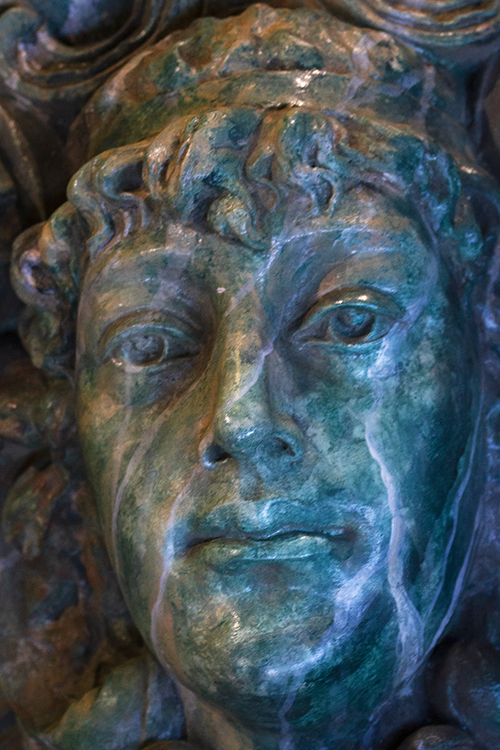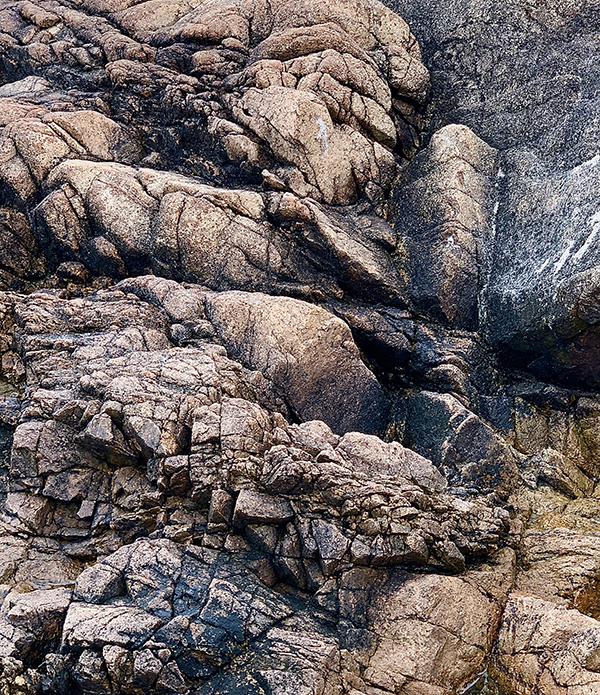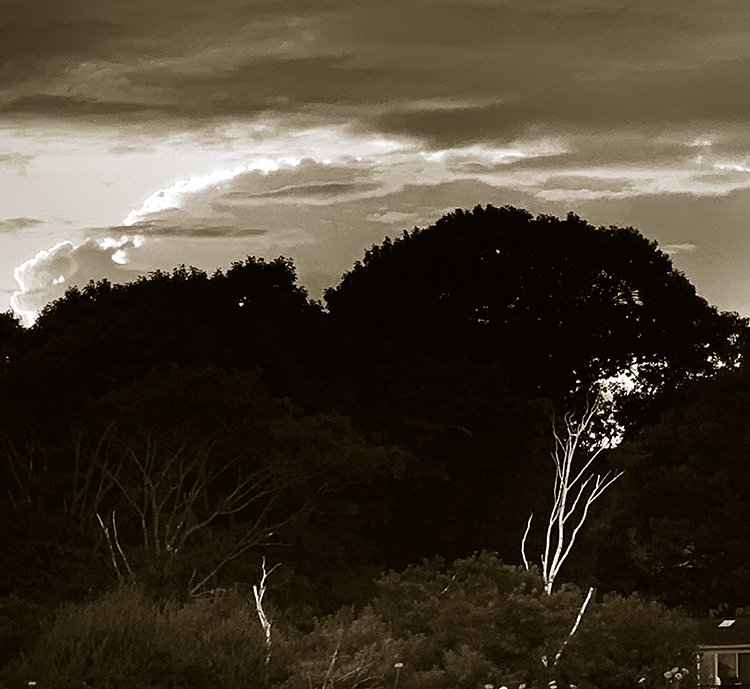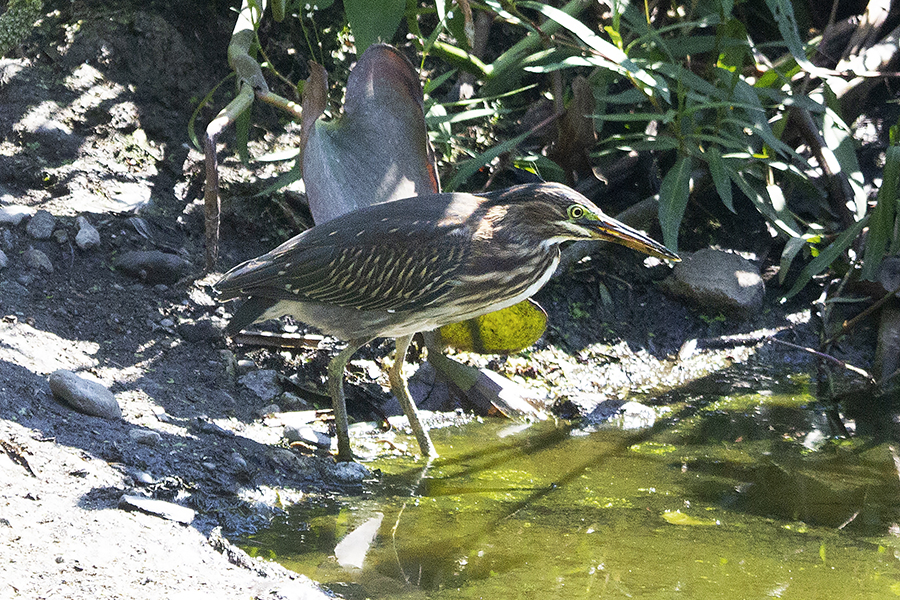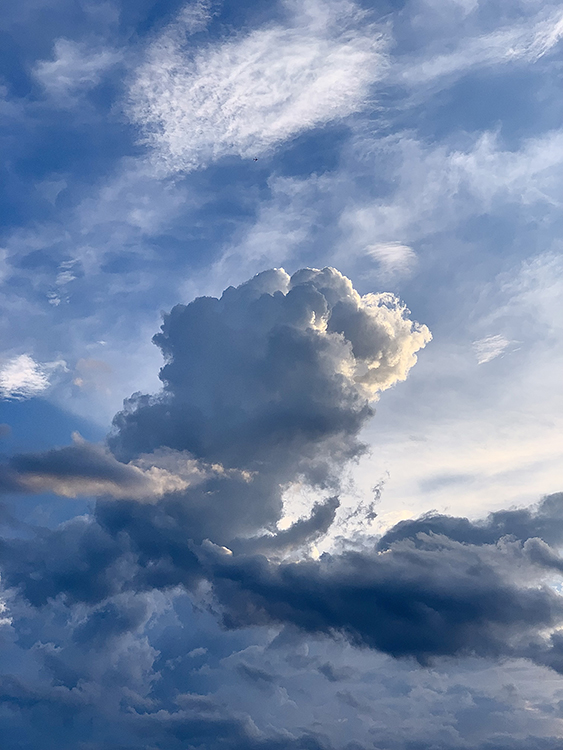Early fall is such a wonderful time to explore and poke around. Two weekends ago we went to Newburyport, MA and walked along the Merrimack River. There is an antique barn there and I found the balustrade ornament or sculpture of Figure 1. It is such a marvelous classical and knowing face, and I find the blue color absolutely wonderful.
The changing seasons
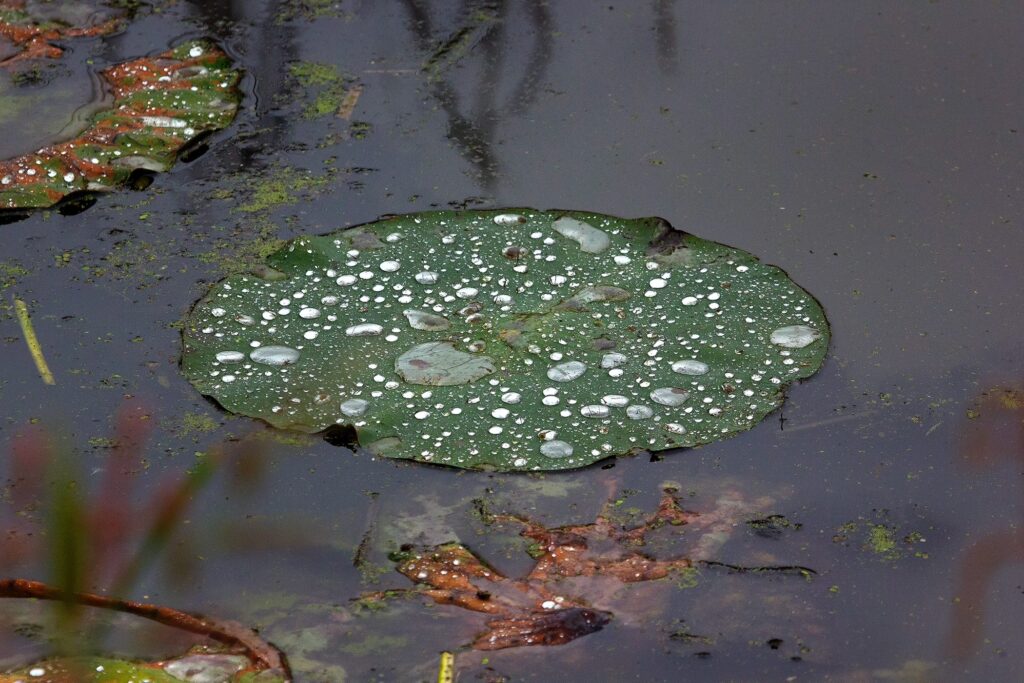
The seasons are changing rapidly now. Fall and then winter seem to be approaching ever so rapidly. We are now bathed in all the glory of New England autumn. To mark the occasion or more accurately the transition I wanted to share the image of Figure 1 – the last of the lotuses at Great Meadow. Despite the drought it has been a glorious summer comeback for the lotus flowers. In this photograph is just a hint of last summer’s glories. Water clings to the pad in giant droplets, the tones mute towards a quiet magenta, and truly summer’s decay has begun.
Summer’s last big bang
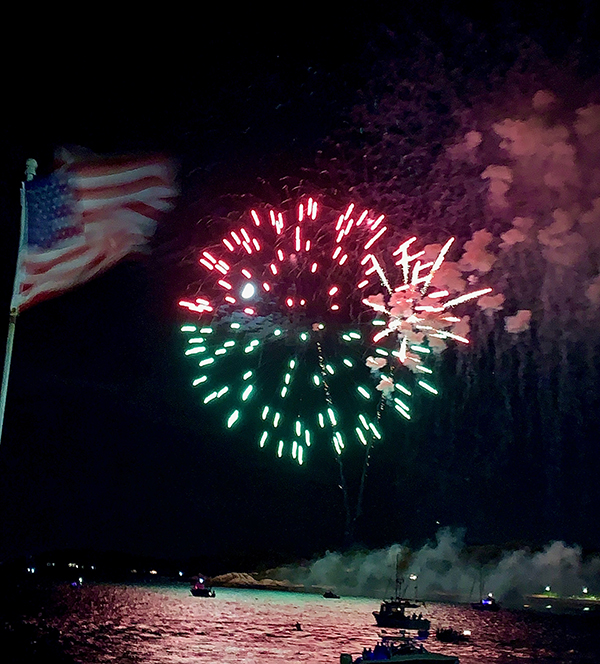
Summer’s last big bang on the Massachusetts North Shore is the fireworks on Labor Day over the Gloucester Harbor. This year TC and I joined the festivities. First, I have to ask, what is the appeal of Fried Dough? Fried dough is a blob of deep fried dough smothered in sugar – aka a heart attack special! One sees it, or worse eats it at all earthy gatherings. It is, along with hot dogs, corn dogs, and sausage hoagies the thing that keeps me out of politics! But I digress.
I just had to take the iPhone photo of Figure 1 showing Old Glory, the moon, and fireworks over the boats gathered in Gloucester Harbor. Now to the glories of fall and at year’s end the coming of Santa Claus to the wharf in Rockport!
Avalon Granites
The image of Figure 1 showing Avalon granites was taken at Cape Hedge Beach on a moody and foggy afternoon a couple of weeks ago, The rock formations are solid and permanent while the sands are always shifting. there have lately been some marvelous and dramatic waves that summon all of the surfers. Of course, truth in fact the granites and their companion basalts aren’t really permanent either. They only seem so on a human time scale. Slowly, but unstoppably, the sea dissolves and erodes them all. For me, the science is always in my head and adds to the beauty and the magic.
Birches at sunset, Cape Hedge Beach
I thought today, Figure1, Birches at Sunset from Cape Hedge Beach, Rockport, MA. Here done as a tritone with an emphasis on the white birches, gleaming in the failing light. It was as always, even on the coldest winter day, a glorious sunset. A successful photograph? I’m not sure.
Green heron
I seem to be completing some photographer’s list of marsh land birds! This morning was particularly hot at the Great Meadows National Wildlife Refuge, and I was lucky enough to photograph the juvenile green heron (Butorides virescens) of Figure 1. He was fishing in one of the outlets to the river and was well hidden by the vegetation. At one point he headed among the plants and lunged unsuccessfully at a little bullfrog. Fortunately for the frog it managed to escape leaping onto a flat of mud.
I personally have never seen green herons at Great Meadows before. I’ve photographed them in Black’s Nook in Cambridge and in Florida. Because of their iridescent greens they are one of my favorites.
Canon T2i with 100-400 mm f/4.5 to 5.6 L USM IS lens at 210 mm, Aperture Priority AE Mode, ISO 1600, 1/800 sec at f/7.1 with no exposure compensation
The ultimate photographic quarry
The ultimate photographic quarry at Great Meadows, indeed most of the New England wetlands is undoubtedly the Great Blue Heron (Ardea herodias) – always such a beauty. As I’ve discussed during our late summer drought both the herons and the egrets as well as their prey are clustered along what remains of the little streams at the Great Meadows National Wildlife refuge. Figure 1 – is an image of one that I took yesterday that is a compliment to my postings of great egrets and a night heron. Here the heron is set up against the lush greenery of the lotuses.
I feel a certain sadness, for our wild places lately. No matter how wild they are, there is always this sense of pollution and intrusion. And, of course, there is the deep stain of climate change everywhere that you turn. In the wild you always have a sense of the cycles of nature and of biological evolution. Look at these great birds, the great blue herons. With the excfeption perhaps of the wild turkeys, they are the firs to raise te hair on the back of the neck as the words “Welcome, to jurassic Park” run through your head!
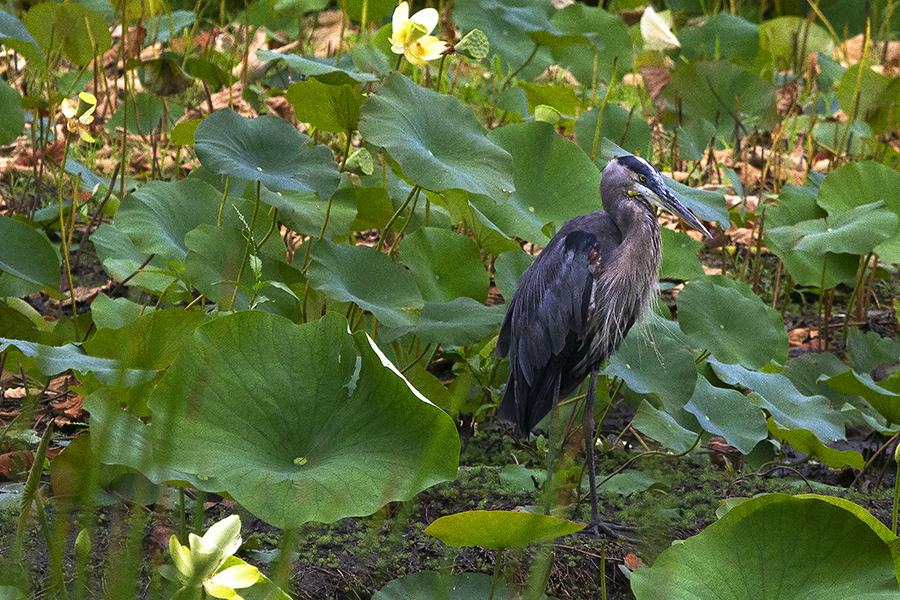
Canon T2i with 100-400 mm f/4.5 to 5.6 L USM IS lens at 220 mm, Aperture Priority AE Mode, ISO 1600, 1/2000 sec at f/8 with no exposure compensation
The smell of hypo
I took the image of Figure 1 at the Great Meadows National Wildlife Refuge in Concord, MA. Most people come into the refuge from the parking lot, but there are a few who enter by canoe or kayak along the river. With its historical roots, the river always carries with its course a kind of wistful remembrance. I’ve tried to capture that here – an excuse of dark tritone,
As I looked at my final “print,” I started thinking nostalgically of the days of hypo and selenium toner. Always there was the smell of hypo, and it was critical to remove the hypo lest the print yellow with time. Again Ansel Adams taught us how to create the archival print, which would outlast us. Pressing the print to dry overnight and then the tactile sense of the double weight paper. Most important was the lesson of creating a print that might still catch the viewers eye a century from now.
I don’t miss those days really, because between the selenium and the silver refuse, things were much less than green. But the smells and scents are gone, and while I love the control of digital photography, it always seems that something is missing.
Canon T2i with 100-400 mm f/4.5 to 5.6 L USM IS lens at 150 mm, Aperture Priority AE Mode, ISO 1600, 1/1600 sec at f/18 with no exposure compensation
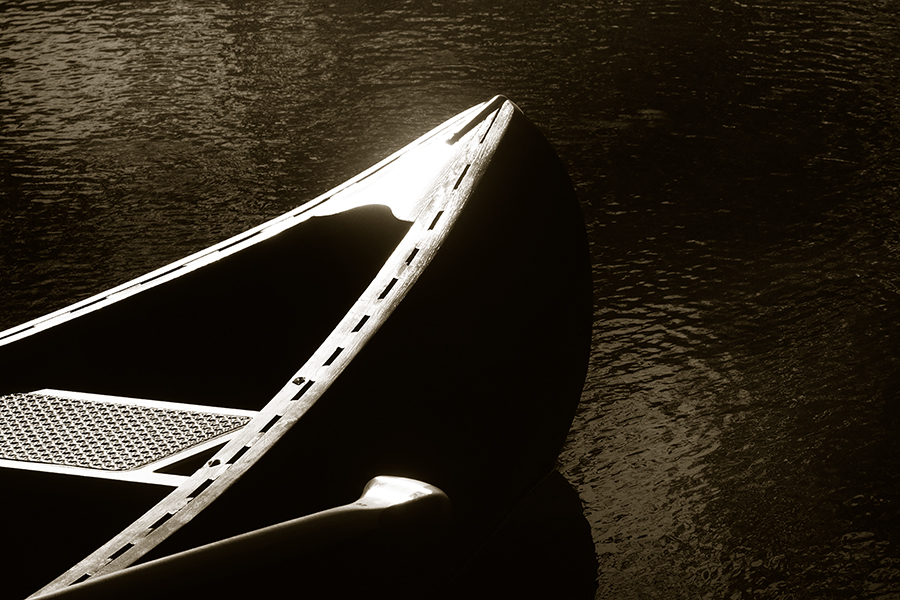
Summer storm
The seasons are changing rapidly on the Massachusetts North Shore, and you find yourself trying to rein in the metamorphosis – not yet ready to give up the days of summer without a fight. The cool air, the fog, and insistent clouds are all signs that we will soon be enveloped by the glories of fall. I say “glories” because fall truly is the bellweather season of New England.
Just a couple of weeks ago TC and I had gone to Good Harbor Beach in Gloucester: she to swim and I to walk. We went at the golden hours six to eight. Named “golden” not just because of the sunset but because one doesn’t have to pay the usurious parking fee! Unfortunately on that evening there were ambulances, police, and rescue boats in the harbor. I suspect there was a missing swimmer, and this weighed heavily on our minds.
As the sun set, thunder clouds moved in, huge monstrous clouds. Ultimately, it was the first serious rain that we have seen all summer. It was the kind of storm that we used to see in NYC, when I was a child. These are the storms of the New England coast painted by Winslow Homer, or classical and allegorical storms like that painted by Pierre-Auguste Cot (1880), which always seem to include gossamer clad wood nymphs – go figure! I have never seen a wood nymph, gossamer clad or oterwise. Anyway, Figure 1 is an image that I took just before the deluge and chaos. I watched the storm across Pigeon Cove in Rockport, where the lightening seemed to strike the same point multiple times, chasing away the cliche that lightening never strikes the same place twice!

